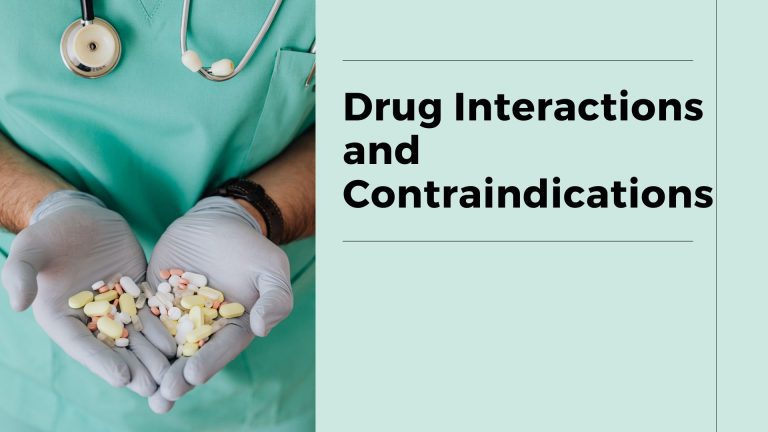Book Appointment Now

Novel Drug Delivery Systems: Inhalers, Patches, and Implants
In modern medicine, drug delivery systems ensure that medications are administered safely, effectively, and conveniently. The method by which a drug is delivered can significantly impact its therapeutic efficacy, patient adherence, and overall treatment outcomes.
Traditional drug delivery methods, such as oral and injectable routes, have their limitations, including variable absorption rates, potential side effects, and issues with patient compliance.
Novel drug delivery systems, such as inhalers, patches, and implants, have emerged as innovative solutions to overcome these challenges. These advanced delivery methods offer several advantages, including targeted delivery, controlled release, reduced side effects, and improved patient adherence.
Novel drug delivery systems can enhance therapeutic outcomes and provide more efficient and patient-friendly treatment options by optimizing the way drugs are administered.
Inhalers allow for the direct delivery of medications to the lungs, providing rapid relief for respiratory conditions with minimal systemic side effects. Patches offer a non-invasive, controlled release of drugs through the skin, improving compliance and convenience for patients requiring chronic medication.
Implants provide long-term, sustained drug delivery directly to the target site, reducing the need for frequent dosing and enhancing the management of chronic conditions.
Inhalers
Inhalers are a critical drug delivery system, particularly for treating respiratory conditions. They enable medications to be directly delivered to the lungs, providing rapid and targeted relief.
Types of Inhalers
Metered-Dose Inhalers (MDIs):
- Description: MDIs are the most common type of inhaler, consisting of a pressurized canister that releases a specific amount of medication in aerosol form.
- Usage: Patients activate the inhaler by pressing down on the canister while inhaling the medication deeply into their lungs.
Dry Powder Inhalers (DPIs):
- Description: DPIs deliver medication in a fine powder form. Unlike MDIs, they do not use a propellant.
- Usage: Patients inhale the powder forcefully, which requires good lung function to ensure effective delivery.
Soft Mist Inhalers (SMIs):
- Description: SMIs produce a slow-moving mist, delivering medication more gently and efficiently to the lungs.
- Usage: These inhalers are easier to use for patients who struggle with the coordination required for MDIs and DPIs.
Mechanism of Action
How Inhalers Deliver Medication to the Lungs:
- Inhalers release medication that is inhaled into the lungs, where it can act directly on the bronchial tubes and lung tissue.
- The medication can either relax the muscles around the airways (bronchodilators) or reduce inflammation (corticosteroids).
The Role of Particle Size and Formulation:
- Particle Size: The effectiveness of inhaled medication depends on the size of the particles. Optimal particle size ranges from 1 to 5 micrometers to ensure deep lung penetration.
- Formulation: The medication’s formulation, including the use of propellants in MDIs or carrier particles in DPIs, affects its stability, dispersal, and absorption in the lungs.
Advantages
Rapid Onset of Action:
- Inhalers provide quick relief from symptoms by delivering medication directly to the lungs, where it can act almost immediately.
Direct Delivery to the Site of Action:
- Targeted delivery ensures that the medication reaches the affected areas with minimal systemic absorption, enhancing efficacy and reducing side effects.
Reduced Systemic Side Effects:
- Because the medication is localized to the lungs, there is a lower risk of systemic side effects compared to oral or injectable routes.
Challenges
Patient Technique and Adherence:
- Effective use of inhalers requires proper technique, which can be difficult for some patients, particularly the elderly and children.
- Adherence to inhaler use can be challenging, especially for chronic conditions that require long-term treatment.
Stability of Formulations:
- Environmental factors such as humidity and temperature can affect the stability of inhaled formulations, potentially impacting their efficacy.
Applications
Asthma:
- Inhalers are the primary asthma treatment, providing quick relief (rescue inhalers) and long-term control (maintenance inhalers) of symptoms.
Chronic Obstructive Pulmonary Disease (COPD):
- Inhalers help manage COPD symptoms by reducing airway inflammation and opening up the airways, improving breathing and patients’ quality of life.
Emerging Uses in Systemic Drug Delivery:
- Inhalers are being explored for systemic delivery of medications, such as insulin for diabetes, due to their ability to provide rapid and non-invasive drug administration.
Inhalers are an essential tool in managing respiratory conditions. They offer rapid, targeted, and effective medication delivery directly to the lungs.
While they present challenges regarding patient technique and formulation stability, their advantages in reducing systemic side effects and providing quick relief make them invaluable in treating asthma, COPD, and other emerging therapeutic areas.
Implants
Implants are an advanced drug delivery system that offers long-term, controlled release of medications directly to specific sites in the body.
Implants represent a sophisticated drug delivery system offering long-term, controlled release of medications with targeted delivery to specific sites. While they provide significant advantages, including reduced dosing frequency and enhanced therapeutic efficacy, challenges such as invasive procedures and biocompatibility issues remain.
Implants are widely used in contraception, cancer treatment, and chronic pain management, with promising applications emerging in chronic disease management and regenerative medicine.
As technology advances, the potential for implants to transform therapeutic approaches continues to grow, providing innovative solutions for complex medical needs.
Types of Implants
Biodegradable Implants:
- Description: Biodegradable implants are designed to break down and be absorbed by the body over time, eliminating the need for surgical removal.
- Usage: These implants are often used for short to medium-term drug delivery, such as in cancer treatment or post-surgical pain management.
Non-Biodegradable Implants:
- Description: Non-biodegradable implants are made from materials that remain in the body and do not degrade. These implants provide long-term drug delivery and typically require surgical removal after their functional period.
- Usage: Commonly used for chronic conditions that require consistent medication delivery over extended periods, such as hormonal treatments or chronic pain management.
Mechanism of Action
Sustained and Controlled Drug Release Over Extended Periods:
- Implants are designed to release drugs at a controlled rate over weeks, months, or even years. This sustained release helps maintain therapeutic drug levels without the need for frequent administration.
Biocompatibility and Material Selection:
- Biocompatibility: The materials used in implants must be biocompatible, meaning they should not provoke an immune response or cause significant tissue irritation.
- Material Selection: Biodegradable materials, such as polylactic acid (PLA) or polyglycolic acid (PGA), are used for temporary implants, while materials like titanium or silicone are used for permanent implants.
Advantages
Long-Term Drug Delivery Without the Need for Frequent Dosing:
- Implants provide a steady release of medication, reducing the need for daily or frequent dosing and improving patient adherence.
Targeted Delivery to Specific Sites in the Body:
- Implants can be placed directly at the site where the drug is needed, enhancing therapeutic efficacy and minimizing systemic side effects.
Challenges
Invasive Implantation Procedures:
- Implantation often requires a surgical procedure, which carries risks such as infection, pain, and recovery time. This invasiveness can be a barrier to patient acceptance.
Risk of Infection and Biocompatibility Issues:
- Implants can pose a risk of infection, especially if proper surgical techniques and sterilization are not maintained. Additionally, there can be issues with biocompatibility, where the body reacts negatively to the implant material.
Applications
Contraceptive Implants:
- Example: Nexplanon is a contraceptive implant that releases hormones to prevent pregnancy for up to three years. It is inserted under the skin of the upper arm and provides a long-term contraceptive solution without daily intervention.
Cancer Treatment:
- Example: Brachytherapy seeds are small radioactive implants used in cancer treatment. They are placed directly into or near a tumor, delivering localized radiation therapy with minimal impact on surrounding healthy tissue.
Chronic Pain Management:
- Example: Morphine pumps are implanted devices that deliver a continuous dose of morphine directly to the spinal cord. This targeted delivery provides effective pain relief for chronic pain conditions while reducing systemic side effects.
Emerging Uses in Chronic Disease Management and Regenerative Medicine:
- Chronic Disease Management: Implants are being explored for conditions such as diabetes, where devices can deliver insulin or other medications in a controlled manner.
- Regenerative Medicine: Implants loaded with growth factors or stem cells are being developed to promote tissue regeneration and repair, offering new treatments for conditions like osteoarthritis or spinal cord injuries.
Comparative Analysis
The following table compares inhalers, patches, and implants based on their efficacy, patient compliance, safety and side effects, and cost-effectiveness.
| Criteria | Inhalers | Patches | Implants |
|---|---|---|---|
| Efficacy | – Rapid onset of action. | – Controlled, sustained release. | – Long-term, consistent delivery. |
| – Effective for respiratory issues. | – Effective for chronic conditions. | – Targeted delivery to specific sites. | |
| Patient Compliance | – Requires proper technique. | – Easy to use and non-invasive. | – No daily administration needed. |
| – Portable and convenient. | – Improved adherence. | – Invasive procedure required. | |
| Safety and Side Effects | – Reduced systemic side effects. | – Potential skin irritation. | – Risk of infection and biocompatibility issues. |
| – Localized delivery. | – Non-invasive application. | – Minimal systemic side effects. | |
| Cost-Effectiveness | – Generally affordable. | – Moderately priced. | – Higher upfront cost, but long-term savings. |
| – Requires regular refills. | – Potential for lower long-term costs. | – May reduce overall healthcare costs due to fewer administrations. |
This comparative analysis highlights the distinct advantages and challenges associated with inhalers, patches, and implants:
- Efficacy: Inhalers offer rapid relief, especially for respiratory conditions. Patches provide controlled and sustained release suitable for chronic conditions. Implants deliver long-term and targeted therapy directly to specific sites.
- Patient Compliance: Patches are the easiest and non-invasive, leading to high patient compliance. Inhalers require proper technique and frequent use, while implants, though requiring an invasive procedure, eliminate the need for daily administration.
- Safety and Side Effects: Inhalers have minimal systemic side effects, while patches may cause skin irritation. Implants, although offering minimal systemic side effects, come with risks related to surgery and biocompatibility.
- Cost-Effectiveness: Inhalers are generally the most affordable but require regular refills. Patches are moderately priced with potential long-term savings. Implants have a higher initial cost but may reduce healthcare costs due to less frequent administration.
Future Directions and Innovations
As technology advances, the field of drug delivery continues to evolve, offering new possibilities for enhancing therapeutic efficacy and patient compliance.
Advancements in Inhaler Technology
Smart Inhalers and Digital Monitoring:
- Smart Inhalers: Equipped with sensors and connectivity features, smart inhalers can track usage patterns, monitor inhalation techniques, and provide real-time feedback to patients. These devices can sync with mobile apps to offer reminders, medication logs, and adherence tracking.
- Digital Monitoring: Integrating inhalers with digital health platforms allows healthcare providers to remotely monitor patient adherence and adjust treatment plans based on real-time data, improving overall asthma and COPD management.
New Formulations and Delivery Mechanisms:
- Advanced Formulations: Research is ongoing to develop new formulations that enhance drug stability and efficacy. This includes nanoparticle formulations and dry powder technologies that improve drug delivery to the lungs.
- Innovative Delivery Mechanisms: New inhaler designs, such as breath-actuated and soft mist inhalers, are being developed to ensure optimal drug deposition in the lungs and reduce patients’ coordination challenges.
Next-Generation Patches
Enhanced Skin Permeability Techniques:
- Microneedle Arrays: Advances in microneedle technology are making it possible to deliver larger molecules, such as biologics and vaccines, through the skin. These tiny needles painlessly penetrate the outer skin layer, allowing for efficient drug delivery.
- Chemical Enhancers and Physical Methods: New chemical enhancers and physical methods (e.g., iontophoresis, sonophoresis) are being developed to increase skin permeability and improve the absorption of drugs that traditionally struggle to penetrate the skin barrier.
Integration with Wearable Technology:
- Wearable Drug Delivery Systems: Combining patches with wearable technology, such as fitness trackers and smartwatches, enables continuous monitoring of physiological parameters and personalized drug delivery. These systems can adjust dosing in real-time based on patient needs.
- Smart Patches: Patches with embedded sensors can monitor drug release rates, skin conditions, and other relevant metrics, transmitting data to healthcare providers for better chronic condition management.
Innovations in Implants
Smart Implants with Wireless Control:
- Remote Control Implants: Smart implants equipped with wireless technology can be controlled remotely to adjust drug release rates based on patient needs or physician instructions. This allows for dynamic and personalized treatment regimens.
- Data Transmission: These implants can transmit data on drug release patterns and patient responses to external devices, facilitating continuous monitoring and timely interventions.
Biodegradable and Bioresorbable Materials:
- Advanced Materials: Developing biodegradable and bioresorbable materials for implants reduces the need for surgical removal after the drug is depleted. These materials naturally break down and are absorbed or excreted by the body, minimizing long-term complications.
- Sustainable Solutions: Innovations in biodegradable materials improve patient outcomes and contribute to environmental sustainability by reducing medical waste.
The future of drug delivery systems lies in leveraging advanced technologies and innovative materials to enhance efficacy, patient compliance, and overall treatment outcomes. Smart inhalers and digital monitoring are set to revolutionize respiratory care, while next-generation patches promise improved skin permeability and integration with wearable technology for personalized therapy.
Innovations in implants, such as smart implants with wireless control and biodegradable materials, offer significant potential for long-term, targeted drug delivery with reduced invasiveness and improved patient experience.
Conclusion
Novel drug delivery systems are transforming modern medicine by offering innovative solutions that enhance therapeutic efficacy, patient compliance, and overall treatment outcomes. These systems, including inhalers, patches, and implants, provide targeted, controlled, and sustained release of medications, addressing many limitations of traditional drug delivery methods.
- Inhalers offer rapid relief and targeted delivery for respiratory conditions. While effective, they require proper technique and adherence. Innovations like smart inhalers and advanced formulations are enhancing their usability and efficacy.
- Patches provide a non-invasive, controlled release of drugs through the skin, improving patient compliance and convenience. Advances in skin permeability techniques and integration with wearable technology are expanding their applications and effectiveness.
- Implants deliver long-term, sustained medication directly to specific sites, reducing the need for frequent dosing and improving treatment outcomes for chronic conditions. Innovations such as smart implants with wireless control and biodegradable materials are addressing the challenges of invasiveness and biocompatibility.
Future Outlook
The future of drug delivery systems is bright, with continuous advancements poised to revolutionize clinical practice. Smart technologies, enhanced formulations, and innovative materials will further improve the precision, efficiency, and patient-friendliness of drug delivery methods.
As these technologies evolve and gain acceptance, they will play an increasingly critical role in personalized medicine, ensuring that treatments are tailored to individual patient needs for optimal health outcomes.
Adopting these novel drug delivery systems in clinical practice will depend on ongoing research, regulatory support, and real-world evidence demonstrating their benefits. As healthcare providers and patients become more familiar with these advanced systems, their integration into standard care protocols will enhance the overall quality of healthcare and improve the management of a wide range of medical conditions.
In conclusion, developing and adopting novel drug delivery systems represent a significant advancement in medicine, offering promising solutions to meet the growing demands for effective, convenient, and personalized treatment options.

Founder of the PTCBFreePracticeTest.com.



